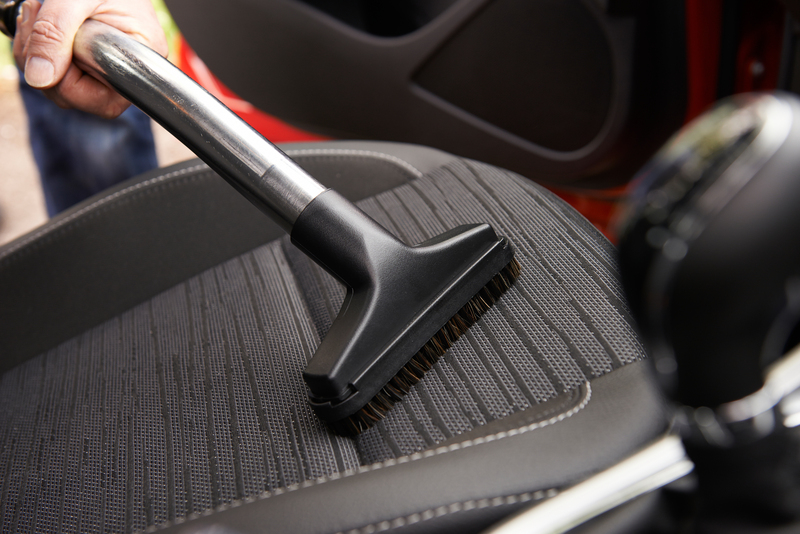Grease Liberation: Step-by-Step to Spotless Enamel Oven Trays
Posted on 23/09/2025
Grease Liberation: Step-by-Step to Spotless Enamel Oven Trays
When it comes to kitchen cleanliness, few tasks are as underestimated as the cleaning of enamel oven trays. Over time, these essential cookware items gather layers of burnt-on grease, food residue, and stains, leading many home chefs to wonder if their once-pristine trays will ever shine again. In this comprehensive guide, Grease Liberation: Step-by-Step to Spotless Enamel Oven Trays, you'll discover proven and safe cleaning strategies that deliver sparkling results--without damaging your enamel.

Why Clean Enamel Oven Trays Regularly?
Oven trays are the workhorses of the modern kitchen, handling everything from baking cookies to roasting vegetables. However, neglected trays not only look unsightly but can also harbor bacteria and negatively affect the flavor of your food. By adopting a regular cleaning routine, you'll:
- Prevent cross-contamination between dishes
- Prolong the lifespan of your enamel trays
- Enhance the performance and heat distribution of your oven
- Maintain a more hygienic kitchen environment
- Ensure your food tastes as delicious as intended
Understanding Enamel Oven Trays
Before delving into step-by-step cleaning instructions, let's clarify what enamel oven trays are. Enamel is a vitreous (glass-like) coating fused to a metal base, offering both durability and resistance to rust and acidic foods. This makes them ideal for high-temperature cooking. However, aggressive cleaning methods can chip or scratch the enamel surface, so selecting the right techniques is crucial.
Common Grease Grievances
Baking, roasting, and grilling all leave their mark--sometimes literally--on enamel oven trays. Most cleaning problems stem from:
- Baked-on grease: This looks like dark brown or black patches
- Sticky residue from sauces and oils
- Hard-to-remove stains after high-temperature cycles
- Discoloration and loss of original sheen
Grease Liberation: A Step-by-Step Cleaning Method for Enamel Oven Trays
Behold the ultimate guide to liberating your enamel oven trays from stubborn grease. These step-by-step methods will restore your cookware's gleam with minimal elbow grease and no harsh chemicals.
Step 1: Cool and Remove Loose Debris
- Allow the tray to cool completely after use to avoid burns and potential warping from sudden temperature changes.
- Scrape off leftover food or burnt bits using a soft spatula or wooden utensil. Avoid metal tools to protect the enamel coating.
Step 2: Soak in Hot, Soapy Water
- Fill your sink with the hottest water you can tolerate. Add a generous squirt of degreasing dish soap.
- *Submerge the enamel tray and let it soak for at least 30-60 minutes*. Longer soaks help loosen stubborn grease and residue.
Step 3: Scrub with the Right Tools
- Avoid steel wool or abrasive scourers that may scratch the enamel.
- Use a non-scratch sponge, soft-bristle brush, or a nylon scrubbing pad for effective yet gentle cleaning.
- For tough stuck-on spots, sprinkle baking soda on the area and add a few drops of water to form a paste. Scrub in a gentle, circular motion.
Step 4: Degrease with Baking Soda and Vinegar (Optional But Powerful!)
- For persistent browned patches, spread a thick layer of baking soda over the affected areas.
- Lightly spray or drizzle with white vinegar. Let it fizz for 5-10 minutes--this chemical reaction lifts off grease and odors.
- Scrub in circular motions, being careful not to use sharp tools.
Step 5: Rinse Thoroughly and Inspect
- Rinse the tray with hot water to remove any soapy residue, soda, and loosened debris.
- Visually inspect your enamel oven tray. If some spots remain, repeat the previous step focusing only on affected areas.
Step 6: Dry and Shine
- Wipe dry immediately with a clean, lint-free towel to prevent water spots.
- For an ultra-shiny finish, buff with a soft microfiber cloth.
Advanced Grease Liberation: Tackling Stubborn Stains
Some stains refuse to budge with regular cleaning. Don't despair--there are targeted tactics you can use to achieve spotless enamel oven trays.
1. The Overnight Baking Soda Blanket
- Sprinkle a liberal coating of baking soda on the greasy tray.
- Cover with a damp paper towel or cloth and let it rest overnight.
- The soda works to lift long-standing grease and stains. Scrub gently the next morning and rinse thoroughly.
2. Steam Cleaning in the Oven
- Place the enamel tray in the oven. Add a shallow pan of water on the lower rack.
- Set the oven to a low temperature (around 120?C/250?F) for 30-45 minutes. The steam loosens baked-on residues, making them easier to wipe off once cool.
3. Commercial Enamel-Safe Cleaners
- If you prefer store-bought solutions, look for cleaners marked "enamel-safe" or specifically formulated for non-stick cookware.
- Always follow the manufacturer's instructions and test on a small area first to avoid discoloration or damage.
Avoiding Common Cleaning Mistakes with Enamel Oven Trays
Knowing what not to do is just as important in maintaining the pristine condition of your enamel oven trays:
- Never use harsh abrasive pads or powdered cleaners not intended for enamel. These may scratch and damage the surface.
- Avoid sudden temperature changes (like plunging a hot tray into cold water) to prevent cracking or warping.
- Don't use bleach or ammonia-based chemicals, as they can cause discoloration.
- Refrain from using metal utensils while cleaning.
Daily and Monthly Maintenance Tips
Keeping your oven trays in tip-top condition doesn't have to be a chore. By adopting a smart routine, you'll experience true grease liberation all year round:
- Line trays with parchment paper or silicone mats before use to minimize mess.
- Wipe away minor spills and grease splatters promptly--don't allow residues to bake on.
- Perform a deep clean every month (or as needed, depending on usage).
- Store enamel trays inside the oven or in dry cupboards to keep them free from dust and moisture.
Sustainable Cleaning: Eco-Friendly Solutions
If you're passionate about sustainability, there are plenty of eco-friendly methods for achieving spotless enamel oven trays:
- White vinegar, baking soda, and lemon juice are natural degreasers and safe for enamel surfaces.
- Reuse old toothbrushes or compostable sponges for gentle scrubbing.
- Skip single-use chemical wipes and opt for reusable cleaning cloths.

FAQ: Enamel Oven Tray Care and Cleaning
-
Can I put my enamel oven tray in the dishwasher?
Many enamel trays are technically dishwasher-safe, but handwashing is gentler and reduces the risk of chips or fading. -
Is it safe to use baking soda and vinegar on enamel?
Absolutely--these are mild, natural cleaners that safely break down grease. Avoid repeated, prolonged use if you notice any surface dullness. -
What if my enamel tray is stained beyond repair?
Some stains may be permanent, especially after years of use. However, thorough cleaning often restores most of the lost shine and cleanliness. -
How can I prevent rust beneath damaged enamel?
Once enamel chips, the exposed metal can rust. Avoid abrasive tools and handle with care to preserve the coating.
Conclusion: Embrace the Freedom of Grease Liberation!
A gleaming, grease-free enamel oven tray isn't just about looks--it's about flavor, hygiene, and maximizing the lifespan of your kitchenware. With a little knowledge and the right methods, you can perform your own grease liberation and maintain your trays in spotlessly clean condition for years to come.
Make these tips a part of your household routine, and let every meal begin with confidence in your cookware's cleanliness. If you found this guide on spotless enamel oven tray cleaning helpful, share it with fellow home cooks--and enjoy the freedom that comes from a truly clean kitchen!



